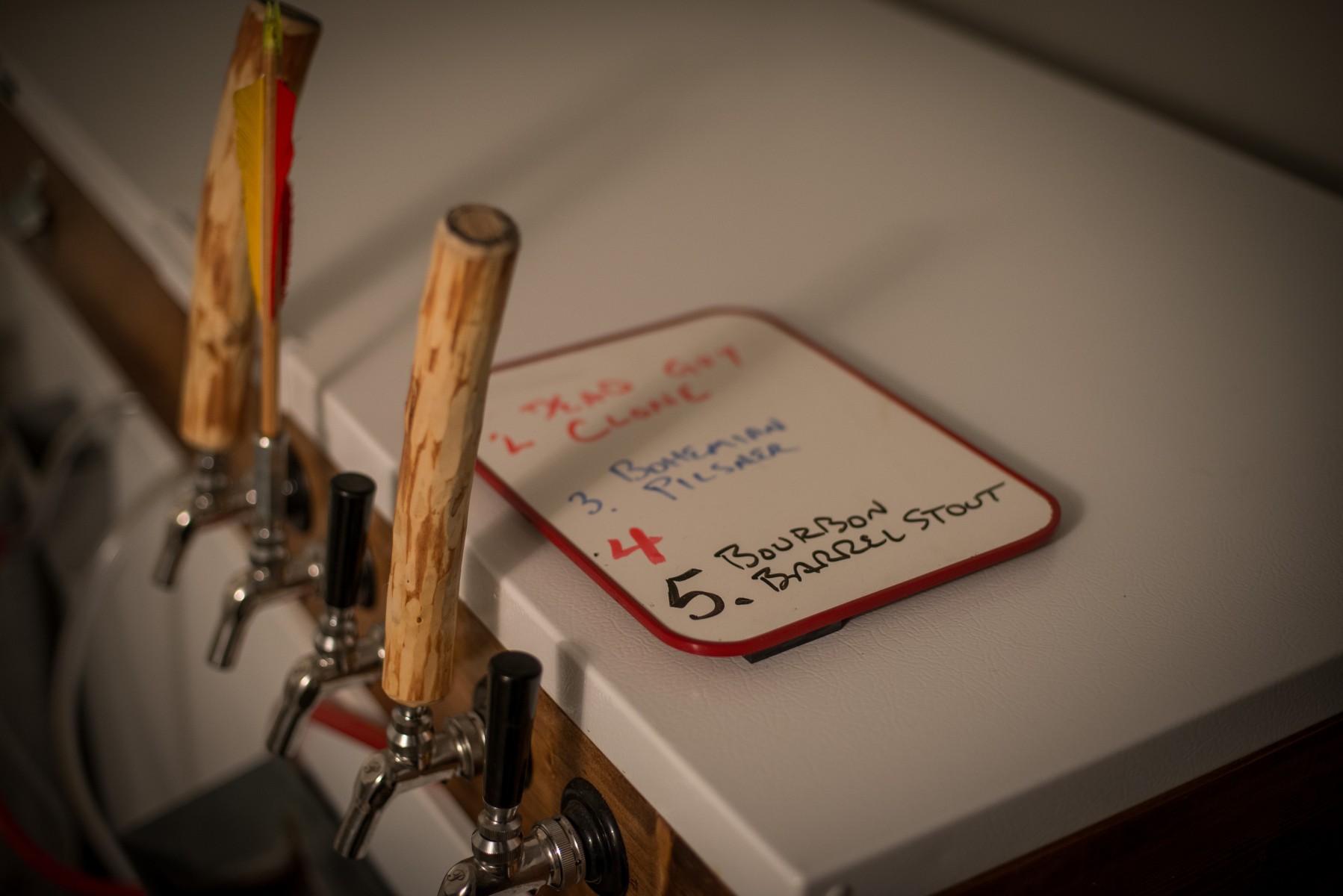STS Bar & Grill: Homebrewing with Kirk Billings

Kirk Billings is one of those guys who just seems to be good at everything and really good at the things he likes best. He’s formerly an elite rock climber (although I wouldn’t doubt his abilities off the couch), who still has his picture on the cover of the local guidebook. He is a chemist who studies air quality for a living and he spends more days afield than most, commonly with a young wirehair who’s coming into her own as an outstanding gun dog. But all of this pales in comparison to his hombrewing prowess. For all practical purposes Kirks’s home is a micro brewery and he was nice enough to give us glimpse into how this came to be.
STS: So we know you like drinking beer. Tell us a bit about how you decided to get into home brewing and where it’s lead you.
Kirk: I originally got into homebrewing in 1994 as I was finishing up my chemistry degree. I like cooking food, I like labwork and I like drinking beer, so it’s a short step to making your own beer at home. After I graduated I spent a lot of time travelling and rock climbing, which because of the equipment and space requirements for brewing didn’t really lend itself to homebrewing, so I stopped for a long while. In 2009, I started brewing again and really started to get into beer style as a way of making sure I got the beer I wanted every time I went out. That led me to the Beer Judge Certification Program (BJCP), an organization that did a tremendous amount of work to put together the beer descriptions that homebrewers use at their competitions. Now I think I have a pretty good handle on what to expect from a brewery when they say they’ve made a Munich Helles or a Russian Imperial Stout or a Flanders Red and I’ve made it a point to experience as many different beer styles and examples of each style as I can. The problem now is, those things can be hard to find in Wyoming. Of course, I’m here for different reasons. The space, the people, the wildlife, the space…
STS: Putting all my cards on the table; you make not only the best home brew I’ve had but some of the best beer period. I’ve always thought home brew was a fun exercise but quality beer was best left to the pros. Why is your beer so darn good?
Kirk: Thanks! Three words, sanitation, sanitation, sanitation. The rest is pretty straightforward.
STS: I’m a huge fan of beer but I tune out when you get into the geeky science of it all. For those more like you than me, tell us about some technical aspect of beer making that you are excited about right now.
Kirk: For quite a while now I’ve been amazed at the huge contribution yeast makes to beer flavor. For example, there are two main types of yeast that are used for beer and they can be generally categorized as ale yeast and lager yeast. Within each category there are multiple strains (like 40+) that you can buy from a lab and each one will make a beer with different flavors. And even more amazing to me is the fact that if you use the same strain of yeast for multiple batches and only vary the temperature, you’ll make noticeably different beers. All of that, and we haven’t even talked about brettanomyces and bacteria in beer! I’ll stop though, because you look like you’re struggling to stay awake.
STS: What’s on tap right now and is there anything new you have on the horizon?
Kirk: From left to right, A Scottish Wood Heavy, a Dead Guy clone, a Bohemian Pilsner, an empty tap (I’m ashamed of that) and a Bourbon Barrel aged Imperial Stout. I’m already planning for the beers I need for 4th of July and hunting season. I’m planning a cream ale, an IPA, a German pilsner, a bock, a Doppelbock and two sour beers to lay down for a few years.
STS: Can you give a recommendation for a beer to go with summer fishing and one for the opener of big game season?
Kirk: Sure. For hot summer fishing I’m a big fan of REAL Pilsners (not riverwater with the word Pilsner on the can). Check out Trumer Pils, Victory Brewing’s Prima Pils, or Pilsner Urquell (which comes in cans or bottles). If you don’t like hop forward beers, try a cream ale like Little Kings or Genesee. Or, if your butler is going to be serving you, might I recommend a bottle of Saison Dupont? Just make sure the beer is handled and decanted properly so you don’t stir up the stuff on the bottom. It will be awesome on a hot day.
For the opener of big game season we’ll have to see…I put in for an archery only elk tag this year and if I get it I bet I spend a lot of time lugging a backpack and a little scotch, because it’s lighter than beer. If I get an antelope tag you can be sure I’ll have some Green Flash IPA in the cooler for the tailgate debriefing at sunset. Or maybe the old standby, Sierra Nevada Pale Ale. That’s still a great beer for me and you can get it in cans. For late season big game hunting (when it cools down) I might switch to my homebrewed bourbon barrel aged stout or Ayinger Celebrator Doppelbock, something with more heft to it.
You’re not going to ask me about bird season? I feel pretty confident that I can come up with multiple beer pairings for chukar season, each one depending on how late in the season we’re going out. Then there’s the four grouse species, pheasant, ducks, geese…and how did I forget dove, especially as a Texan? I need to do more research, but I feel confident each species has its own perfect tailgate beer.
STS: Thanks a bunch for the time!
Kirk: You’re welcome! I tried to be brief but seem to have failed in that endeavor. Let me know if I need to clarify anything, as you know, I can talk for hours about beer.


